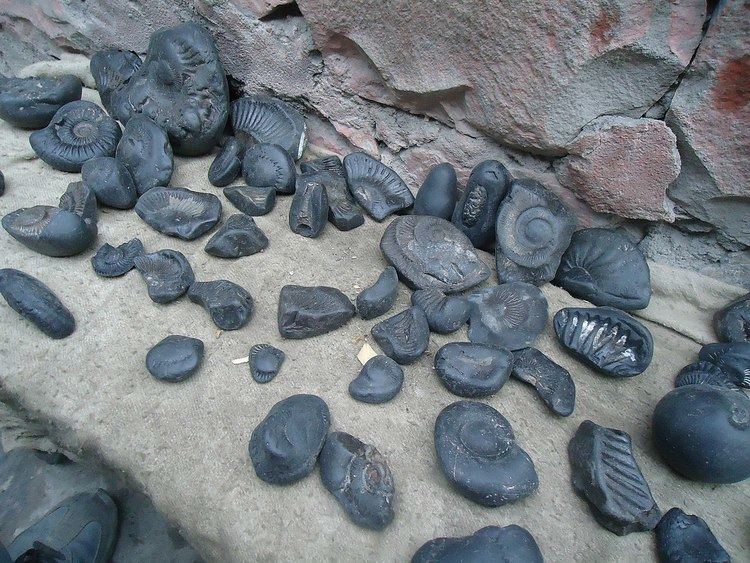 | ||
Shila, (शिला in Devanagari, śila in IAST) or Shaligram refers to a fossilized shell used in South Asia as an iconic symbol and reminder of the God Vishnu as the Universal Principle by some Hindus. Shaligrams are usually collected from river-beds or banks such as the Gandaki river in Nepal. They are considered easy to carry and popular in certain traditions of Vaishnavism, as an aniconic representation of the divine. They are typically in the form of spherical, black-coloured Ammonoid fossils.
Contents
Use
Although Hinduism has many anthropomorphic murtis (images) of gods, aniconism is equally represented with such abstract symbols of God such as the Saligrama and Shiva lingam.
History
Historically, the use of Shaligrama (or Salagrama) Shilas in worship can be traced to the time of Adi Shankara through the latter's works. Specifically, his commentary to the verse 1.6.1 in Taittiriya Upanishad and his commentary to the verse 1.3.14 of the Brahma Sutras suggest that the use of Saligrama in the worship of Vishnu has been a well-known Hindu practice.
The largest and heaviest Shaligrama can be seen at the Jagannath Temple, dedicated to Vishnu, at Puri in Orissa. The main ISKCON temple in Scotland, called 'Karuna Bhavan' is famous for housing the largest number of Shaligram Shilas outside of India.
Configurations
A Shaligrama – which has the marks of a shankha, Chakra, gada and padma arranged in a particular order – is worshiped as Keshava. With the change in the order of the four symbols, the name of the Shaligrama stone is also different and the images of such deities also have similar setting of the four symbols. The various orders and names are given for the twenty four permutations. These are well known names, which are the different names by which Lord Vishnu is known in the Hindu pantheon. The various versions of the Saligrama Shilas or stones vis-a-vis the order of the four symbols are:
